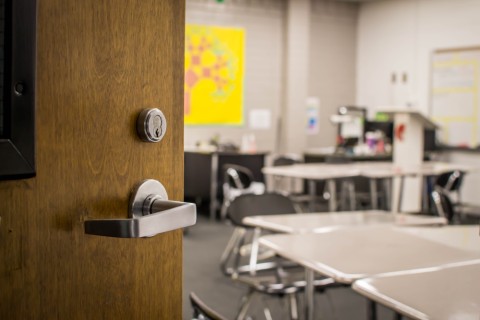Open Enrollment: Debunking the Myths

With the Missouri House recently passing HB 711 (Pollitt), the conversation around open enrollment and the misconceptions have intensified. While some fear this policy will destabilize public schools, the reality is far less dramatic. Open enrollment is a form of public school choice where families may send their children to schools outside their home districts.
Representative Brad Pollitt, R-Sedalia, a former teacher, coach, and superintendent, wrote the legislation with families in mind. He has worked to clarify that the bill expands opportunities for students without harming public schools — and does not require districts to participate.
HB 711 creates a voluntary open enrollment program, meaning no district must participate. Districts that opt in can set capacity limits and retain control over enrollment decisions. The bill also includes safeguards to prevent families from enrolling in a school for the specific purpose of utilizing the transfer program and to prevent sudden enrollment shifts, such as limiting outgoing transfers to 3% per year. Schools can’t turn students away because of their grades, disabilities, English language proficiency, and other protected traits. They also can’t give preference to students for their academic or athletic ability.
Despite this, Pollitt has faced persistent misleading claims about the bill, particularly claims that it forces districts to participate. He has worked to clarify that the only requirement is for districts to create a policy — they are not obligated to accept transfer students.
"What I have been trying to tell people is to listen," Pollitt said. "There are going to be Republicans in charge for a long time, and every year, there are multiple school choice bills, and this is the only option that is going to keep students in the public school system; every other choice takes them out."
He explained that his concern is that without open enrollment, families seeking alternatives could be entirely driven out of the public school system.
While open enrollment may raise concerns about district finances or student movement, 43 states already have some form of interdistrict open enrollment, and research shows that outcomes largely depend on how districts implement the policy.
When presenting the bill to the committee, Pollitt explained, "This bill is about giving families choices without undermining our public school system. Should your home address be the main determination in what public school your children attend? I don't believe it should. Open enrollment offers parents more options while maintaining accountability within the system."
Check out this study by the Prime Center at Saint Louis University to better understand open enrollment policies and their potential impact. For further coverage, read the latest reporting from the Missouri Independent.